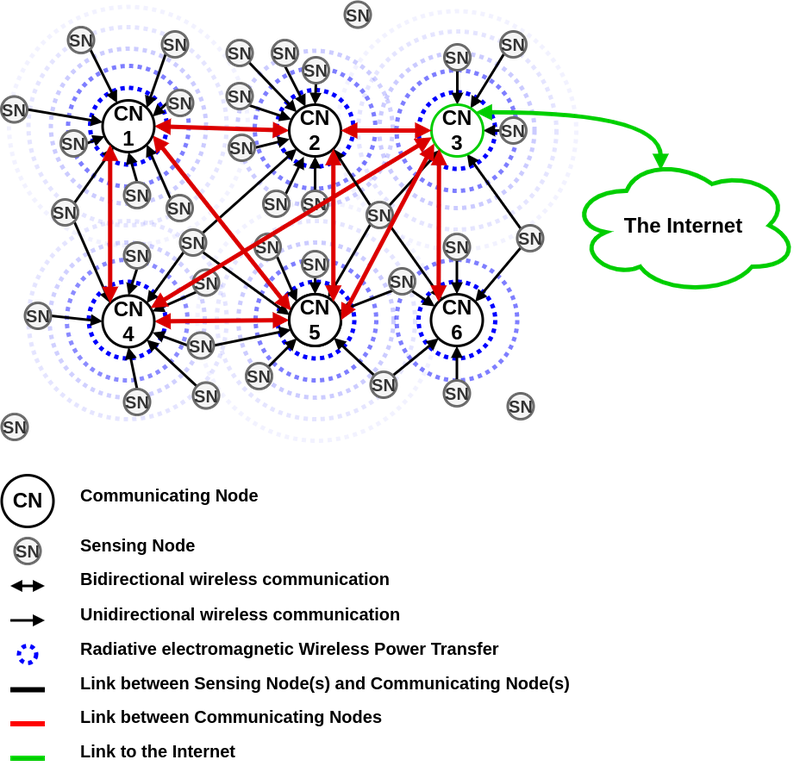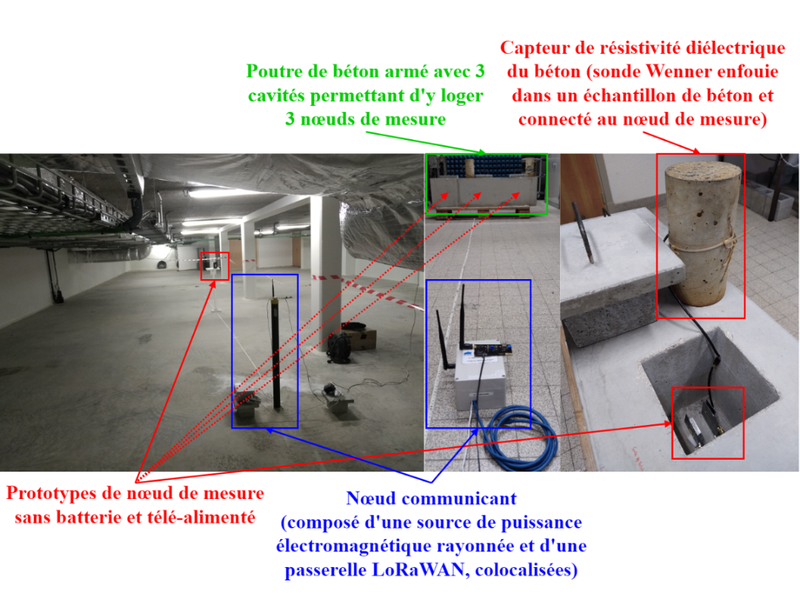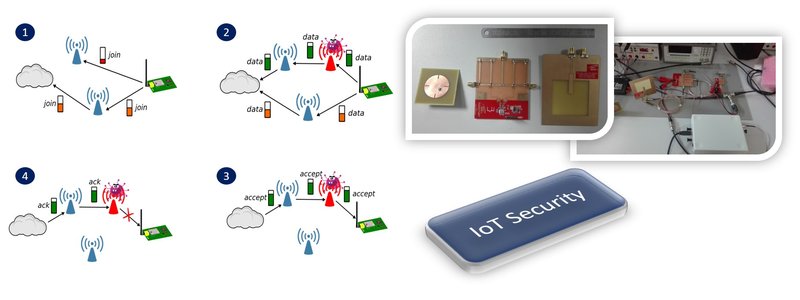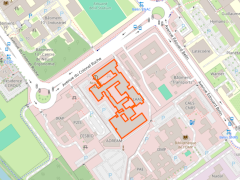Autonomous Cyber-Physical Systems
Energy and decision-making autonomy for secure cyber-physical systems designed for various applications.
The MINC team works on complex Cyber-Physical Systems, in particular to make them energy autonomous and to secure them using hardware approaches.
Complex Cyber-Physical Systems
In the context of the Internet of Things (IoT), and targeting applications related to the Structural Health Monitoring (SHM) of intelligent buildings, the MINC team proposes innovative architectures and implementations of complex Cyber-Physical Systems (CPS). Using an optimised mesh network, which integrates the Simultaneous Wireless Information and Power Transmission, and which is made up of wireless and battery-free sensing nodes and communicating nodes, it is possible to upload measured physical quantities to the Internet -and digital twins- in a reliable and secure way.

Architecture of the network of wireless and battery-free sensors as implemented.

Example of deployment of the network of wireless and battery-free sensors in constrained environments: basement of the ADREAM energy autonomous building at LAAS-CNRS; and in a reinforced concrete beam.
Cybersecurity: a multi-level approach
Given the increasing complexity of systems -where the operating logic is distributed between software and hardware components- it is important to adapt security measures by adopting a multi-level or cross-layering approach. This approach considers all the layers of the system: from the physical/hardware part to the application software part. The major scientific challenge that members of the MINC team are addressing is the implementation of wireless communication security techniques at physical layer level. These security techniques adapt to the various communication protocols without altering them and with low energy consumption. Various innovative techniques are being studied. These are based either on the characteristics of antennas and/or meta-surfaces/metamaterials, or on the design of communication circuits, or on the introduction of a third-party object that will act as a security monitor.

The most common scenarios for cyber-attacks on wireless networks for the Internet of Things / Cyber-Physical Systems, and a prototype of a hardware solution for enhancing the security of objects in a minimally intrusive way (simply by replacing the antenna, so without altering the communication protocol) by playing on the polarisation of the waves.
Contacts: Alexandru TAKACS, Daniela DRAGOMIRESCU, Gaël LOUBET












